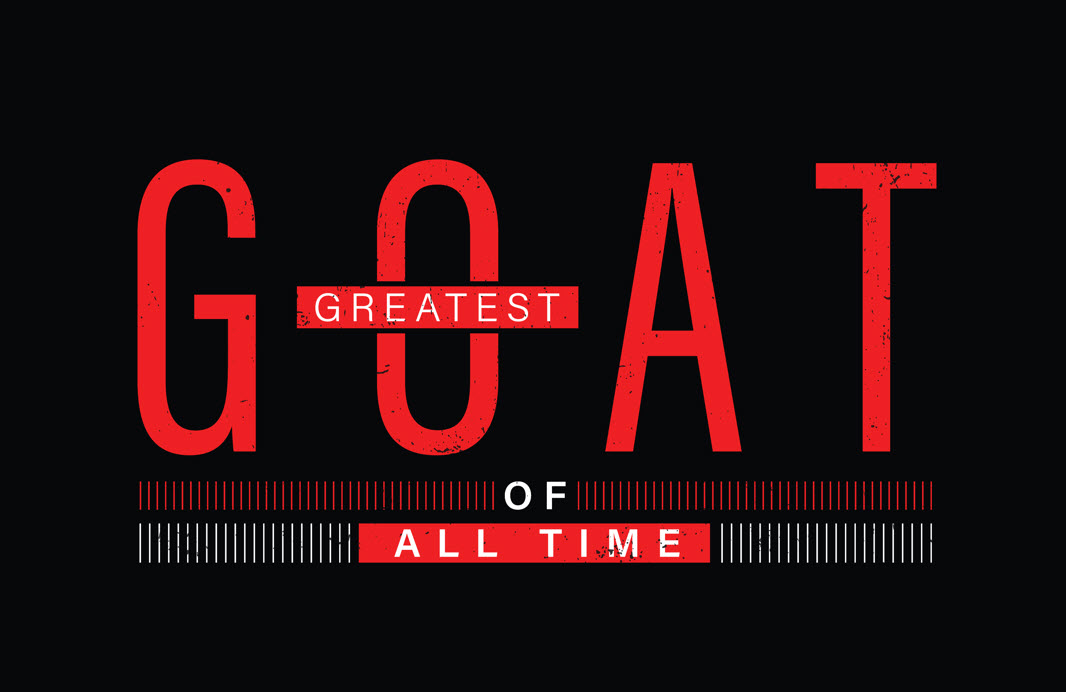One Bad Game:
FYI… G.O.A.T. means Greatest of All Time. I find it funny how everyone loves to identify the G.O.A.T. in every walk of life. There is a G.O.A.T. for every sport, author, singer, actor, and I would imagine even clubs and communities across the country. The debate usually focuses on someone currently excelling, but what about those who changed the game in their time? Simone Biles is widely considered the gymnastics G.O.A.T., but what about Olga Korbut? She revolutionized the sport in her era.
Now, let us reflect on the Kansas City Chiefs’ quarterback (QB) after Sunday’s game. Many talking heads have proclaimed him the G.O.A.T. of NFL quarterbacks, but what about the countless other QBs who were game-changers over the years? (No Detroit Lions on this list!) Many of them took brutal hits on every play without getting a flag. After Sunday’s performance, some of those same analysts might be rethinking their stance on the Chiefs’ QB.
In these examples, we are talking about exceptionally talented individuals who left a lasting impact on their profession. People still reflect on their contributions and debate why they were the best.
That got me thinking—who is the G.O.A.T. of debt collection?
What Defines a Collection G.O.A.T?
Let us take a walk down Debt Collection’s memory lane and check out these advancements and changes to the industry.
Evolution – 1920s: Anything Goes
- I like to think that the bill collector is the second oldest profession on the planet and prior to the 1900’s was pretty much anything goes. Think about that G.O.A.T., scary.
1920s–1950s: Early Regulation & Industry Growth
- 1938 – The Fair Labor Standards Act (FLSA) indirectly affects debt collection by setting wage standards, influencing garnishment laws.
- 1940s–1950s – The rise of consumer credit (credit cards, auto loans) increases the need for formal debt collection practices.
1960s–1970s: Consumer Protections Introduced
- 1968 – Truth in Lending Act (TILA) requires lenders to disclose loan terms, reducing deceptive lending and collection practices.
- 1970 – Fair Credit Reporting Act (FCRA) regulates how consumer credit information is collected and used, impacting debt collection practices.
- 1977 – Fair Debt Collection Practices Act (FDCPA) is enacted, banning abusive, unfair, and deceptive collection tactics.
1980s–1990s: Automation & Industry Expansion
- 1980s – The rise of call centers and automation leads to more efficient, but sometimes aggressive, debt collection.
- 1996 – Amendments to the FCRA expand consumer rights and require stricter accuracy in credit reporting.
2000s: Digitalization & Stricter Oversight
- 2003 – Fair and Accurate Credit Transactions Act (FACTA) improves credit reporting accuracy, affecting debt collections.
- 2008 – The financial crisis leads to a surge in debt collection activity, sparking consumer complaints and calls for reform.
2010s: CFPB & New Regulations
- 2010 – Dodd-Frank Act creates the Consumer Financial Protection Bureau (CFPB) to oversee debt collection practices.
- 2013 – The CFPB begins enforcing debt collection rules, increasing penalties for unfair practices.
- 2015 – Use of artificial intelligence and analytics in debt collection increases efficiency.
2020s: Modern Reforms & Digital Collections
- 2021 – Regulation F (by CFPB) updates the FDCPA, setting new limits on call frequency and allowing digital communication (texts, emails).
- 2023–Present – Increased use of AI, machine learning, and digital payments in collections; continued regulatory scrutiny on debt collection tactics.
- 2025 – Donald Trump
Could the G.O.A.T of the early 1900s be the G.O.A.T. today? Maybe or maybe not.
As the world, industries, technology, and people evolve over time, the idea of a single, true G.O.A.T. becomes unrealistic—especially in fields that continuously change. People adapt, grow, and excel as they gain new experiences.
I entered the industry in 1987 and have witnessed significant change while working alongside many talented professionals and companies.
The progress in debt collection has not been driven by just one person or entity but rather by a combination of people, businesses, government regulations, consumer advocates, and even the countless past-due customers who have shaped its evolution.
With so many factors at play, I do not believe there can be just one G.O.A.T. in the world of collections. Instead, it is the collective contributions that have advanced the industry, making it more valuable and effective than ever before.
Conclusion
The good thing about our industry is that regardless of the time, people still want more than they can afford so there will always be a need for collections.
When it comes to identifying the Greatest of All Time in debt collection, the reality is that the industry—like sports, entertainment, and any other profession—constantly evolves. What was groundbreaking in the 1920s would not hold up today, and what we see now will continue to change with new regulations, technology, and consumer expectations.
Instead of a single G.O.A.T., the industry has been shaped by a collective force—pioneers who introduced new strategies, companies that pushed innovation, regulators who enforced fairness, and even consumers who influenced best practices. Debt collection is not just about recovering past-due accounts; it is about adapting, improving, and finding the balance between business and consumer rights.
So, can we truly name one Collection G.O.A.T.? Probably not. But we can recognize the people, policies, and innovations that have made the industry what it is today—and what it will be in the future.
What do you think? Who (or what) has had the biggest impact on debt collection?
Sign Up for the Twice Monthly Newsletter
Just enter your email address at the top orange bar at:
Collection Compliance Experts – “The Power of Expertise: Oversight Perfected”
It’s that easy! Twice a month – we provide blog updates and Resources for the Collection and Industry Professional.
Your email is just for this newsletter. We never sell your information. No fee. Opt-out at any time.

Author: Ken Evancic
Ken.Evancic@ResourceManagement.com
As a consultant for Resource Management Services, Ken provides consulting, training and mentoring in all phases of collection and recovery, in addition to auditing third party vendors.
Ken Evancic is a Vice President at Resource Management Services, Inc. Ken Evancic is a collections veteran with over 25 years experience. He has managed all phases of collection, including all levels of delinquency, automated dialer units, early out agency management, recovery, and skip tracing. In addition to collections operations management, he has lead initiatives in the areas of performance management, collections strategy development, collector and manager training, collector desktop design, collections reporting systems, and risk and compliance.
As a consultant for Resource Management Services, Inc., Ken has specialized in developing and completing third party compliance and performance audits for collections agencies and collection attorney firms for many top credit grantors and debt buyers. He has leveraged his 25 years of experience to develop multiple collector and collection management training classes designed to maximize collector performance. In addition to collection training, Ken helped develop and facilitates the RMS Third Party Vendor Auditing training.




